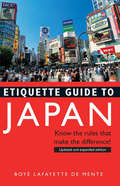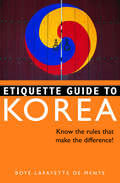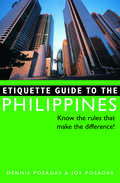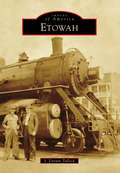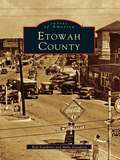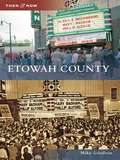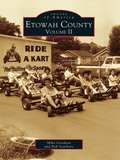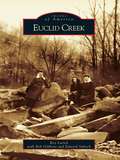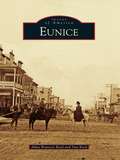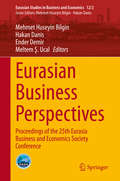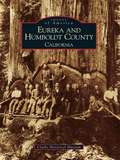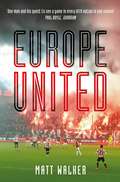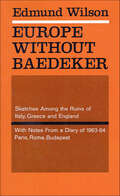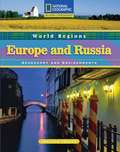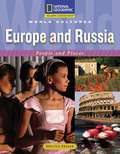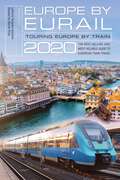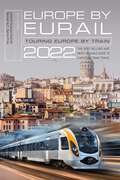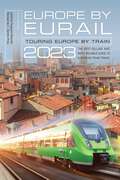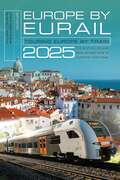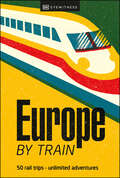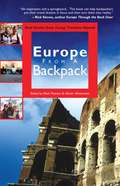- Table View
- List View
Etiquette Guide to Japan
by Boye Lafayette De MenteFarewell to faux pas!Minding your manners is an acquired skill, but what serves you well elsewhere could trip you up in Japan. Save yourself possible embarrassment with Etiquette Guide to Japan. An inside look at Japanese social graces, it answers all the questions of the thoughtful traveler.Although often overshadowed by a modern facade, long-standing traditional aspects of Japan's culture still influence the country and almost everyone in it. Concrete evidence of this traditional culture can be seen everywhere.To many Western visitors, however, the most obvious example of this traditional culture's strength is the unique etiquette of the Japanese. Like many nations, Japan has experienced vast political, social, and economic change over the past century. But enough of Japan's traditional etiquette remains to set the Japanese apart socially and psychologically, and to make success in socializing and doing business with them a special challenge for Westerners.This updated and expanded edition of the classic etiquette guide addresses all the newest developments, trends and protocols that every traveler needs to know, from the tea ceremony to the subway to the bathroom.
Etiquette Guide to Korea
by Boye Lafayette De MenteFarewell to faux pas!South Korea is one of the greatest economic success stories of the past 60 years, and more and more Westerners are traveling to this bustling, modern country for business and pleasure. But no matter why you visit, an understanding of Korea's etiquette and culture is essential to an enjoyable and successful trip.Known as "the Hermit Kingdom" until the final decades of the ninteenth century because it kept its doors closed to the outside world, Korea wasn't exposed to international influences until the mid-twentieth century. Perhaps this is why may of the traditional aspects of Korea's culture have been preserved in spite of the explosion of modernity in recent times. Today Korea's age-old culture has combined with the ultramodern Western ways and conveniences to transform the country into one of the world's most popular destinations.This authoritative guide covers everything the courteous traveler needs to know, including the importance of names and how to use them, shaking hands versus bowing, table manners for celebrations and everyday meals, and how to negotiate in Korea.Also included are invaluable lists of Korean vocabulary and helpful phrases, making this book the most important asset for your trip or extended stay in Korea.
Etiquette Guide to Philippines
by Joy PosadasNever fear social blunders again with this essential guide to Filipino etiquette!Whether visiting for business or pleasure, knowledge of the local customs and traditions will help make the most of your trip to the Philippines. Covering a variety of topics—from how to greet new people to how one is expected to behave during formal events, business meetings and nights out on the town—Etiquette Guide to the Philippines is an indispensable companion for the courteous traveler.
Etiquette Guide to Philippines
by Joy PosadasNever fear social blunders again with this essential guide to Filipino etiquette!Whether visiting for business or pleasure, knowledge of the local customs and traditions will help make the most of your trip to the Philippines. Covering a variety of topics—from how to greet new people to how one is expected to behave during formal events, business meetings and nights out on the town—Etiquette Guide to the Philippines is an indispensable companion for the courteous traveler.
Etiquette Guide to Philippines
by Joy PosadasNever fear social blunders again with this essential guide to Filipino etiquette!Whether visiting for business or pleasure, knowledge of the local customs and traditions will help make the most of your trip to the Philippines. Covering a variety of topics—from how to greet new people to how one is expected to behave during formal events, business meetings and nights out on the town—Etiquette Guide to the Philippines is an indispensable companion for the courteous traveler.
Etowah (Images of America)
by S. Durant TullockIn 1902, the Louisville and Nashville Railroad was looking for a place halfway between Cincinnati and Atlanta to build a rail center. This site would be the home of a rail yard for crew changes and shops to build and repair boxcars. After being turned down for two locations, the railroad looked to an area at the foot of Starr Mountain rich with timber to build the shops and railcars. Several years later, a decision was made to go forward with this site, and in 1906 the L&N Railroad built its first planned community. In one year, over 2,000 people were employed by the line, and a town emerged. One hundred years later, the town maintains a rich heritage built around the rail.
Etowah County
by Bob Scarboro Mike GoodsonDrawing from, among other sources, the collection of famed photographer Adolph Lebourg, a French immigrant who traveled to Alabama with a circus, Scarboro and Goodson combine wonderful images with insightful text to provide a unique look at the county's heritage. Especially evident in Lebourg's photographs is a passion for motorcycles, providing a great point of interest for many of the book's images. Etowah County includes such points of interest as the Kyle Home, which once stood on the present site of the Etowah County Courthouse, the home of Alabama Power Company founder W.P. Lay, andseveral of the county's early movie theaters. Many local businesses and industries are highlighted in the early years of their existence. Also included are glimpses of such local events as parades, sporting events, and the beautiful Nocallula Falls. Whether one is a longtime resident familiar with all the area has to offer, or a newcomer eager to learn more of the county's heritage, Etowah County is a wonderful look at days gone by.
Etowah County
by Mike GoodsonEtowah County, located in northeast Alabama, was formed in 1866 from parts of Marshall, Calhoun, St. Clair, DeKalb, Blount, and Cherokee Counties. Originally known as Baine, the area was named Etowah County in 1868. Although the smallest county in Alabama in land area, Etowah is rich in local history.
Etowah County Volume II
by Bob Scarboro Mike GoodsonEtowah County Volume II traces the history of everyday citizens in this Alabama community. Largely derived from the collections of local photographers Bob Scarboro and Hugh Hall, the images in this volume depict the county's championship sports teams, the drive-in theaters and restaurants of the post-World War II era, and the mansions that once lined Forrest Avenue. Also included are two rare and seldom-seen photographs-the old dummy engine of the streetcar line that ran from Gadsden to Attalla, and the wooden dance pavilion located beneath Noccalula Falls at the turn of the century. Readers will discover the lasting contributions made to Etowah County by such notable early settlers as Col. R.B. Kyle, Capt. James M. Elliott Jr., Gen. Daniel Turrentine, and Judge John H. Disque. Many of the area's schools, businesses, and churches can be attributed to the efforts of these enterprising individuals. Etowah County Volume II also celebrates the contributions made by the hard-working, everyday people who have made this Alabama community a memorable place to live.
Euclid Creek
by Edward Siplock Bob Gibbons Roy LarickOver the centuries, Euclid Creek's torrents have drilled through bluestone and shale, carving deep gorges in a gentle landscape. Modes of transport have always guided human life in the watershed. Early Native Americans trekked the creek's gorge rims to form an extensive trail network. In 1796, Moses Cleaveland's survey crew named "the big crick" Euclid, in honor of the inventor of survey mathematics. As early settlers arrived, they turned the Indian trails into county roads and used the creek to power saw and grist mills. By the 1850s, steam railroads took Euclid Creek wine and bluestone to distant markets. In 1896, electrified rails gave impetus for summer resorts and country estates. By 1920, automobiles were ferrying suburbanites to Tudor side streets. Now, Interstate highways funnel exurbanites into shopping centers. Framed in the history of transport, Euclid Creek tells the story of this Great Lake tributary stream and her many different communities. Euclid Creek is a unique history of the Great Lake tributary stream and her many different communities. Drawing from numerous archives, the authors surmount municipal boundaries to show the whole history of a nearly forgotten natural landmark.
Eunice
by Van Rodney Reed Alma Brunson ReedBeginning as a real estate venture on the isolated prairie of southwestern Louisiana in 1894, Eunice is now a progressive small city due to its traditions of volunteerism, community spirit, and resourcefulness. In the late 1980s, the city enjoyed a renaissance when a far-sighted mayor capitalized on the dominant Cajun culture to pull Eunice out of the economic crevasse of the decade's "oil bust." It emerged as a picturesque community with an emphasis on its rich history and its newly recognized heritage tourism. The city's unique Frenchness lures tourists and locals to the live Cajun music shows at the Liberty Center and to experience the joie de vivre at a rural Mardi Gras. The historic images found in Images of America: Eunice feature the day-to-day activities of Eunice's people through good times and lean days from 1894 to the late 1980s.
Eurasian Business Perspectives: Proceedings of the 25th Eurasia Business and Economics Society Conference (Eurasian Studies in Business and Economics #12/2)
by Mehmet Huseyin Bilgin Hakan Danis Ender Demir Meltem Ş. UcalThis volume of Eurasian Studies in Business and Economics presents selected theoretical and empirical papers from the 25th Eurasia Business and Economics Society (EBES) Conference, held in Berlin, Germany, in May 2018. Covering diverse areas of business and management from different geographic regions, the book focuses on current topics such as consumer engagement, consumer loyalty, travel blogging, and AirBnB's marketing communication strategy, as well as healthcare project evaluation and Industry 4.0. It also includes related studies that analyze accounting and finance aspects like bank reliability and the bankruptcy risks of equity crowdfunding start-ups.
Eureka and Humboldt County: California
by Clarke Historical MuseumThe cry amongst the redwoods-Eureka!-was the shout heard from early pioneers in 1850 as they came to settle in Humboldt County. Discovery of gold permanently changed the area's history, and eventually lead to the extraction of Humboldt's other natural resource: the "red gold" of its forests. Captured here in over 200 vintage photographs is the pictorial history of this bountiful county and its residents.As the gold fever faded in the late 1800s, Humboldt County's primary source of industry became the lumbering of its vast redwoods. Pictured here are the men and machines that felled, transported, and milled the lumber, as well as photographs of the elegant Victorian mansions of the industry's lumber barons, such as William Carson. Weaving the history of Humboldt County together are the stories of its earliest residents, including the Native American tribes, fevered Gold Rushers, the early Chinese community, railroad workers, shipyard sailors, and industrious farming families, all of whom created the foundation it prospers on today.
Europe United: 1 football fan. 1 crazy season. 55 UEFA nations
by Matt WalkerAS SEEN ON BBC FOOTBALL FOCUS AND BT SPORT'Excellent and thoroughly enjoyable' Sunday Sport'One man and his quest to see a game in every UEFA nation in one season' Paul Doyle, GuardianEUROPE UNITED follows Matt Walker's unprecedented challenge to experience top-division football in all 55 UEFA countries in a single season.In June 2017, Matt said farewell to his job, surrendered his Fulham FC season ticket and set off for Georgia, the first stop on his mission. He would end his adventure eleven months later in Montenegro, having conquered the continent and captured the imagination of its sporting media.His epic journey would pose its challenges. Yet no amount of airport confusion in Iceland, unusual betting activity in Latvia, spectator bans in Albania, disturbances in Kosovo or ropey breakfast buffets in Moldova would make Matt miss a matchday. And then there were the games themselves: showcasing the full spectrum of footballing theatre, from the truly sublime to the utterly ridiculous.Matt's trip would also bequeath him footballing wisdom beyond his imagination. Not only would he learn that Liechtenstein had its very own 'golden generation', but also why one football club in Gibraltar is benefitting from a television gameshow, who in La Liga's mascot is a giant anchovy, how Tony Adams fared in his managerial spell in Azerbaijan, and just what Bosko Balaban is up to these days.This is the story of one fan on a once-in-a-lifetime experience: travelling to Europe's unseen corners, talking with its unsung supporters, and tracing the beautiful game across the breadth of our brilliant, bizarre continent.
Europe Without Baedeker: Sketches Among the Ruins of Italy, Greece and England, With Notes from a Diary of 1963–64: Paris, Rome, Budapest
by Edmund WilsonFirst published in 1947, Edmund Wilson's Europe without Baedeker returns to print with personal notes from the preeminent author-critic. This volume provides an informative and vivid account of postwar Europe in the countries of Italy, Greece, and England, as well as diary entries from Wilson's many travels. "The author--in measured, often seductive prose, makes a telling, thoughtful profile of the places visited, the people seen, and leaves in the mind a distressing picture to contemplate." - Kirkus Reviews
Europe and Russia: Geography and Environments (World Regions)
by Sherilin ChanekWhere can you go to see towering mountains, vast plains, warm islands, and cold, treeless landscapes? The answer is Europe and Russia, a huge region of great geographic diversity
Europe and Russia: People and Places (World Cultures)
by Sherilin ChanekThis book looks at culture in several different ways. As you read about the ways of life of some of Europe and Russia's people, think about how their cultures might compare to your own.
Europe by Eurail 2020: Touring Europe by Train
by LaVerne Ferguson-KosinskiEurope by Eurail has been the train traveler&’s one-stop source for visiting Europe&’s cities and countries by rail for more than forty years. This comprehensive guide provides the latest information on fares, schedules, and pass options, as well as detailed information on more than one hundred specific rail excursions. The book contains information readers need to enjoy visits in historic cities, romantic villages, and scenic hamlets on more than ninety rail trips starting from twenty-eight base cities located in twenty countries. Sample rail-tour itineraries combine several base cities and day excursions into fifteen-day rail-tour packages complete with hotel recommendations and sightseeing options. .Packed with practical information, step-by-step directions, advice on where to go and what to see and do, and complemented by the inclusion of twenty maps, Europe by Eurail takes the puzzle out of European Rail Travel.
Europe by Eurail 2022: Touring Europe by Train
by LaVerne Ferguson-KosinskiEurope by Eurail has been the train traveler&’s one-stop source for visiting Europe&’s cities and countries by rail for over forty years. Newly revised and updated, this comprehensive annual guide provides the latest information on fares, schedules, and pass options, as well as detailed information on more than one hundred specific rail excursions and sightseeing options.
Europe by Eurail 2023: Touring Europe by Train
by LaVerne Ferguson-KosinskiEurope by Eurail has been the train traveler&’s one-stop source for visiting Europe&’s cities and countries by rail for nearly fifty years. Newly revised and updated, this comprehensive annual guide provides the latest information on fares, schedules, and pass options, as well as detailed information on more than one hundred specific rail excursions and sightseeing options.
Europe by Eurail 2024: Touring Europe by Train
by LaVerne Ferguson-KosinskiEurope by Eurail has been the train traveler&’s one-stop source for visiting Europe&’s cities and countries by rail for nearly fifty years. Newly revised and updated, this comprehensive annual guide provides the latest information on fares, schedules, and pass options, as well as detailed information on more than one hundred specific rail excursions and sightseeing options.
Europe by Eurail 2025: Touring Europe by Train
by LaVerne Ferguson-KosinskiEurope by Eurail has been the train traveler&’s one-stop source for visiting Europe&’s cities and countries by rail for nearly fifty years. Newly revised and updated, this comprehensive annual guide provides the latest information on fares, schedules, and pass options, as well as detailed information on more than one hundred specific rail excursions and sightseeing options.
Europe by Train
by DK EyewitnessTake to the rails and have a European adventure with this inspiring and practical guidebook.Thanks to Europe&’s ever-expanding and improving rail network, there&’s never been a better time to explore this diverse continent by train. But with so much ground to cover, it can be difficult to know where to start – and that&’s where Europe by Train comes in. Compiled by a team of travel experts, our 50 hand-picked itineraries will kickstart your plans, showing you how to join the dots between Europe&’s must-see destinations and introducing you to plenty of lesser-visited stops along the way. Featuring a mix of short trips and epic adventures, cross-continent and region-specific itineraries, this book provides endless inspiration, whether you&’re looking to hop between Europe&’s capitals, explore Scandinavia or experience the best of Italy.Packed inside Europe by Train you will find:- 50 inspiring and practical itineraries for exploring Europe by train.- Routes cover a variety of distances, from four-day trips to month-long adventures. - Each route covers either an epic cross-continent journey (eg from the North to the South, East to West) or a particular area, region or country (eg Beneluxe, Northern Italy, Finland), with the text describing the places you stop at rather than the journey between them.- Practical information details how to get between each stop, total distance travelled, trip duration and ticketing tips.- Some routes feature suggested detours and opportunities to extend your trip.Once your head is well and truly packed with rail trip ideas, you&’ll be ready to start planning out the details. This handy guidebook has all the route infographics, network maps and practical information – including advice on what tickets to buy, how to catch connections and tips for travelling on night trains – you need to get started. We&’ve also included detours and opportunities to extend the route, so you can curate your own rail adventure.
Europe from a Backpack
by Mark Pearson Martin WestermanIf you've ever wanted to backpack in Europe... If you want to relive your adventures... If you love good travel writing... Better than guidebooks, these first-person accounts paint vivid pictures of a traveler's experience in Europe. Like familiar music and favorite scents, they'll awaken a taste for adventure in those who have yet to travel, and bring back memories for those who have. Romance, surprise, discovery and wisdom all bubble through these authors' inviting pieces. At last, a collection of first-person eye-witness adventures that will keep you laughing, wondering, and walking with the well-traveled story tellers who take you inside Europe's must-see places. Billy Anderson stares down death at the running of the bulls in Pamplona. Lisa Cordeiro takes a "will work for food" approach to travel as a waitress at a Paris restaurant. And Mike Riley's desperate search for underwear in a Portuguese market... well, that's another story.
